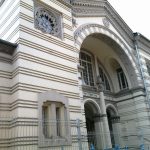
Choral Synagogue is the place of the only working synagogue and school "Tarahat Hakodesh" in Vilnius This synagogue is built in the Oriental Moorish style and is only survived one out of some 105 before WWII synagogues and other Judaic prayer housesThe exterior contains an inscription in Hebrew "A prayer house is sacred for all nations", and above the pediment the tablets with the Ten Divine Commandments are representedAll photos are copyrighted by Vladislav B. Sotirovic© Vladislav B. Sotirovic 2020
Continue Reading
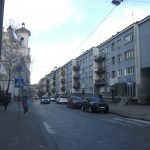
The Górecki estate in Dominikonų St. 15 is a two-storey Gothic house. It was built on this site in the late 15th or early 16th century. In 1649 it was bought by Vilnius UniversityZawisha estate is known since late 16th or early 17th century. It was renovated in the late 18th century. The façade is strictly symmetrical, done in the style of early Classicism. Renaissance vaults have survivedDominikonų Street is dominated by the Roman Catholic Church of the Holy Spirit and the Dominican Monastery (1501)All photos are copyrighted by Vladislav B. Sotirovic© Vladislav B. Sotirovic 2020
Continue Reading
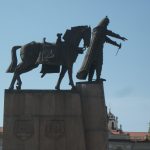
Grand Duke Gediminas is considered as the founder of the city of Vilnius. The monument is located in front of the Royal Palace and Cathedral Basilica in the very downtown of VilniusGediminas was a diplomatic politician, creating ties with the Roman Pope and other European rulers. He created favourable conditions for merchants and guildsmen to come to the city. Gediminas was a Grand Duke of the Grand Duchy of Lithuania from 1316 to 1341During the time of Gediminas, people of different ethnicities and confessions began to live in Vilnius. He is the founder of the Gediminian-Jagelonian ruling dynasty of Lithuania and later of Poland as well (till 1572)All photos are copyrighted by Vladislav B. Sotirovic© Vladislav B. Sotirovic 2018
Continue Reading
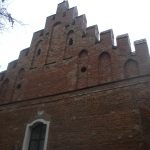
The church was named after St. Nicholas, who was the Bishop of Myra and the patron of travelers and merchants. The character of Santa Claus is thought to be based on this saintThe Church of St. Nicholas in Vilnius is the oldest surviving Late Gothic church in Lithuania. The small church was used by the Franciscan monks, who lived nearbyThe interior of the church is decorated with ornate rib and groin vaults. A 16th-century picture of St. Nicholas with a silver frame is located on the left altarAll photos are copyrighted by Vladislav B. Sotirovic© Vladislav B. Sotirovic 2018
Continue Reading

The Church of the Assumption is one of the Vilnius' most beautiful Baroque churches and most mature building of the Vilnius' Baroque schoolConstruction on the church began in 1695 and the final work was carried out by Vilnius' Baroque architect Johann Christoph Glaubitz (1700-1767) in 1750-1756The front façade is adorned by a domical rotunda vestibule, and two elegant towers with clocks All photos are copyrighted by Vladislav B. Sotirovic© Vladislav B. Sotirovic 2019
Continue Reading
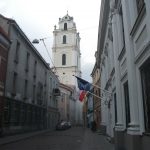
In this street, it was used to be a market place where it meets Pilies street. The first Town Hall is also believed to have stood on this spot Pharmacy house in St. John St. No. 5. Georg Schulz's pharmacy operated in this house since 1639. During the war in 1655, the house was burned down. In 1781, pharmacist Koszyk acquired the ruined building and reconstructed it The Pac estate. Since 1628, the building belonged to the Pac magnate family of the Grand Duchy of Lithuania. In 1783, the dilapidated building was bought, renovated and decorated by the Chancellor of the Grand Duchy of Lithuania - Alexander Michael Sapieha. Currently, the building belongs to the Polish Embassy All photos are copyrighted by Vladislav B. Sotirovic© Vladislav B. Sotirovic 2020
Continue Reading
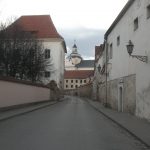
At the Church of the Holy Spirit, a Dominican monastery was established on St. Ignatius Street in 1501. In the 19th century, the buildings of the monastery were converted into a prison The entrance from St. Ignatius Street to the former old Jesuit Novitiate: arranged around three courtyards. It is the same age as the nearby Church of St. IgnatiusThe Church of St. Ignatius was erected from 1622 to 1647 being devastated by fires in 1748-1750. It suffered during the war against Russia from 1655 to 1661. The porch was added in the 19th century.All photos are copyrighted by Vladislav B. Sotirovic© Vladislav B. Sotirovic 2020
Continue Reading
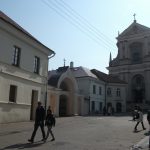
It was built from 1633 to 1654 under the patronage of the Vice-Chancellor of the Grand Duchy of Lithuania, Stephen Pac. Most probably the exterior was designed by Italian Constantino Tencalla. The exterior of the Church of St. Theresa is designed according to the models of Roman architecture: it is noble and harmonious, built along with the vertical principle with volutes and side obelisksThe St. Theresa Church (left) is located at Dawn St. nearby the Gate of Dawn (at the top) that is famous for its miraculous image of the Mother of Mercy (or Mary of Vilnius)The chapel is built by the Barefoot Carmelite monks for the miraculous picture of Mary of Vilnius in 1671. The St. Theresa Church was built with a large Barefoot Carmelite Monastery, established near Vilnius' defensive wall All photos are copyrighted by Vladislav B. Sotirovic© Vladislav B. Sotirovic 2018
Continue Reading

A geographical centre of Europe - 25 km far from Vilnius. From 2015 Summer You will get a special Certificate that you have visited the Geographical center of Europe. Don't miss the chance to get it for freeThe Baltic States of Europe - Estonia, Latvia & LithuaniaVytis (The Knight) - The Coat of Arm of both historical Grand Duchy of Lithuania and present-day the Republic of LithuaniaOrigins of images: Facebook, Twitter, Wikimedia, Wikipedia, Flickr, Google, Imageinjection & Pinterest.Read our Disclaimer/Legal Statement!Donate to Support UsWe would like to ask you to consider a small donation to help our team keep working.
Continue Reading
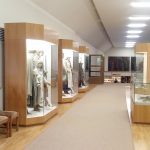
The museum is located in the north wing of the Old Arsenal and looks at Neolithic, Bronze and Iron Age Lithuania followed by the various tribes that inhabited the area until they combined to form a state in the 13th centuryThe museum displays object found in burial sites, such as pins, amulets, rings, brooches, knives or necklaces. You can as well as see regional dressses of Lithuanian tribes before the formation of the state in the mid-13th century The museum shows a hoard of some 16.000 17th-century coins found in 1999 in Vilnius. It is believed that the hoard may have been hidden during the 1700-1721 Great Northen War. Nevertheless, it is the largest collection of old coins to be found in Lithuania All photos are copyrighted by Vladislav B. Sotirovic© Vladislav B. Sotirovic 2020
Continue Reading
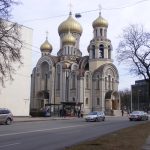
It is one of the most attractive Russian Orthodox churches in Vilnius: the exterior is a profusion of shining onion-shape domes; but the interior is remarkably serene. The interior's simplicity is interupted only by an elaborate iconostasis The internal space is created by two huge pairs of parallel semi-circular arches, intersecting at the top under the central dome which is also the main source of lightA panel on the right of the iconostatis depicts the two saints, both from noble families in the Middle Ages, to whom the church is dedicatedAll photos are copyrighted by Vladislav B. Sotirovic© Vladislav B. Sotirovic 2020
Continue Reading
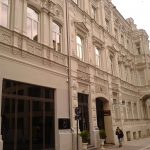
The building in Vilnius Street in Vilnius No. 25 in which Jonas Basanavičius died in hospital on February 16th, 1927. The day of his death coincided with the anniversary of the Independence Act in 1918A memorial plaque on the building informs that in this building in 1909 the Editorial Board of the oldest Lithuanian newspaper "Lithuanian News" started to work Another memorial plague on the building as this building housed a music school, where the famous violinist Jascha Heifetz studied in 1905-1909 All photos are copyrighted by Vladislav B. Sotirovic© Vladislav B. Sotirovic 2022
Continue Reading
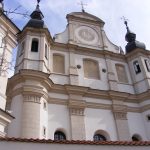
The church was financed by Grand Chancellor of the Grand Duchy of Lithuania, Grand Hetman, and Vilnius Voivode - Lew Sapieha, who had converted to Roman Catholicism from Calvinism. He was one of the most influential nobles in the Grand Duchy of LithuaniaLew Sapieha gave the church and surrounding buildings for the Bernardine nuns to have a convent and built a Sapieha family mausoleum in the churchThe convent was also a place where the daughters of rich aristocrats were taught. Today, the Church Heritage Museum operates in the churchAll photos are copyrighted by Vladislav B. Sotirovic© Vladislav B. Sotirovic 2019
Continue Reading
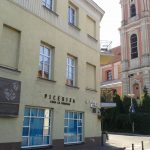
Monument in Remembrance of Vilnius Ghetto Martyrs and Fighters in 1941-1943. The Large Vilnius Jewish Ghetto was liquidated on September 23, 1943, and the Jews who couold work were moved to concentration and labor campsFormer Vilnius Ghetto Theatre. Jewish institutions, which included the theatre, did not stop operating in the ghetto during WWII. A theatre was in operation in the Large Ghetto in 1942-1943 The Ghetto Library's building, now under the reconstruction. At the time of ghetto, the name of the street was Strashun Street in which the library was locatedAll photos are copyrighted by Vladislav B. Sotirovic© Vladislav B. Sotirovic 2019
Continue Reading
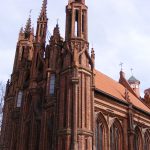
Church of St. Anne (left) and Bernardine Church (right). The church of St. Anne is a unique monument of red firebrick Gothic architecture in LithuaniaSt. Anne Church, designed in 1495-1500 by Benedikt Rejt, built up at the turn of the 15th century, and renovated in 1902-1909. 35 different kinds of brick were used help in creating the church. The façade was reinforced in 1960-1970St. Anne Church - a church which French Emperor Napoleon Bonaparte wanted to put on his palm and carry it over to Paris. The Church of St. Anne is symmetrical, marked by graceful, pointed forms that continue upwardAll photos are copyrighted by Vladislav B. Sotirovic© Vladislav B. Sotirovic 2018
Continue Reading
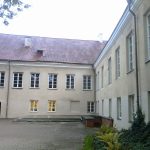
Earlier in this courtyard was an artillery school. The Rector of the Vilnius University S. Malewski as well as lived in the building of this courtyardA poet Adam Mickiewicz spent much time with his son in their house in 1818-1819. As the first-year student, he lived in one of those buildings. Later, it became a gathering place of the PhilomatsThe courtyard is surrounded by two-storey buildings. A Gothic façade of one of them is facing Pilies StreetAll photos are copyrighted by Vladislav B. Sotirovic© Vladislav B. Sotirovic 2023
Continue Reading
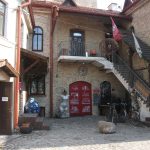
Užupio street is the main street in the city's district of Užupis. The district was in the Soviet time one of the most dilapidated districts in Vilnius. Many of the buildings did not have electricity and sanitary facilities, and the streets were unlitThe River Užupis which separates Užupis district from the Old Town. On one side of the river is a unique ensemble of sacred buildings and a park, while on the other side is "Republic of Užupis", where a number of artists live and work"Angel of Užupis" sculpture. An angel is playing a trumpet that provides ideas about Užupis to others and protects the district. The 24th Article of the Constitution of Užupis, for instance, says that "Everyone has the right to understand nothing". The district is separated from the Old Town by the River Vilnia on three sides, and by a high hill on the fourth sideAll photos ...
Continue Reading
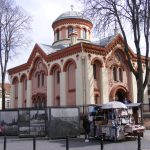
The Russian Orthodox Church of St. Parasceve (or Piatnickaya Church) is located in the centre of Vilnius' Old Town where a Russian Orthodox Church stood since the times of the Lithuanian Grand Duke Algirdas in the mid-14th centurySt. Parasceve Russian Orthodox Church is the oldest surviving Russian Orthodox Church in Lithuania located in the former Russian quarter of the Old TownThe church was reconstructed in the mid-19th century by the famous Russian architect N. ChaginAll photos are copyrighted by Vladislav B. Sotirovic© Vladislav B. Sotirovic 2021
Continue Reading
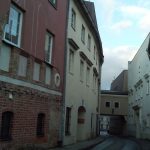
A former Gothic façade that was uncovered at Karmelitų Str. around Rūdninkų Square in the Old Town of VilniusThe back-side façade from the inner courtyardThe back-side façade from the inner courtyard. The house is located on the territory of WWII Large Jewish GhettoAll photos are copyrighted by Vladislav B. Sotirovic© Vladislav B. Sotirovic 2020
Continue Reading
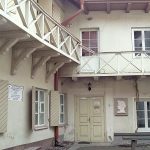
In this house, belonging at the time to a university professor, Adam Mickiewicz stayed for a short period in 1822 and completed the poem "Gražina"It is small museum of three rooms but it is currently being expended. Among the exhibits are several portraits of Adam Mickiewicz and some period furniture, including a table and chair from Kaunas and a chair from Paris that the poet himself usedThe exhibition includes among the many volumes of his work in foreign languages, for instance, a Persian translation of his "Sonnets from the Crimea" All photos are copyrighted by Vladislav B. Sotirovic© Vladislav B. Sotirovic 2020
Continue Reading
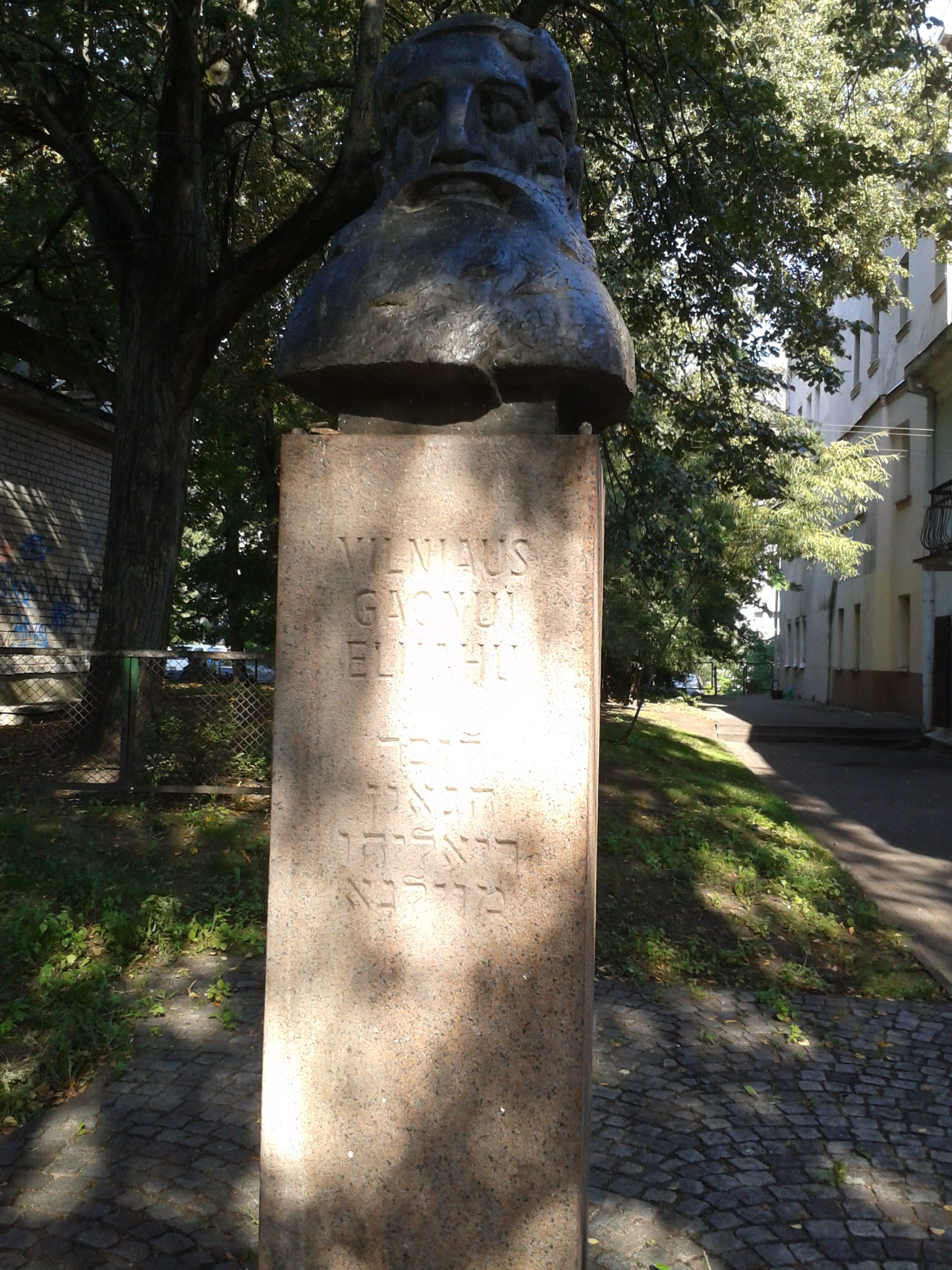 Monument to the Gaon of Vilnius Elijah ben Solomon Zalman (1720-1797) called “Jewish Saga”. The monument is located on the place where he lived. The house was destroyed during WWII and it was not restored. Nearby the monument there is a memorial plaque in Lithuanian and Hebrew on a building at Žydų (Jewish) Street
Monument to the Gaon of Vilnius Elijah ben Solomon Zalman (1720-1797) called “Jewish Saga”. The monument is located on the place where he lived. The house was destroyed during WWII and it was not restored. Nearby the monument there is a memorial plaque in Lithuanian and Hebrew on a building at Žydų (Jewish) Street  Antokolski Street in Vilnius Old Town’s Jewish Quarter. In this street the famous 19th century sculptor Mark Antokolski lived in 1843-1862. It was here he created his first sculptors depicting the inhabitants of his native quarter, which later gained recognition
Antokolski Street in Vilnius Old Town’s Jewish Quarter. In this street the famous 19th century sculptor Mark Antokolski lived in 1843-1862. It was here he created his first sculptors depicting the inhabitants of his native quarter, which later gained recognition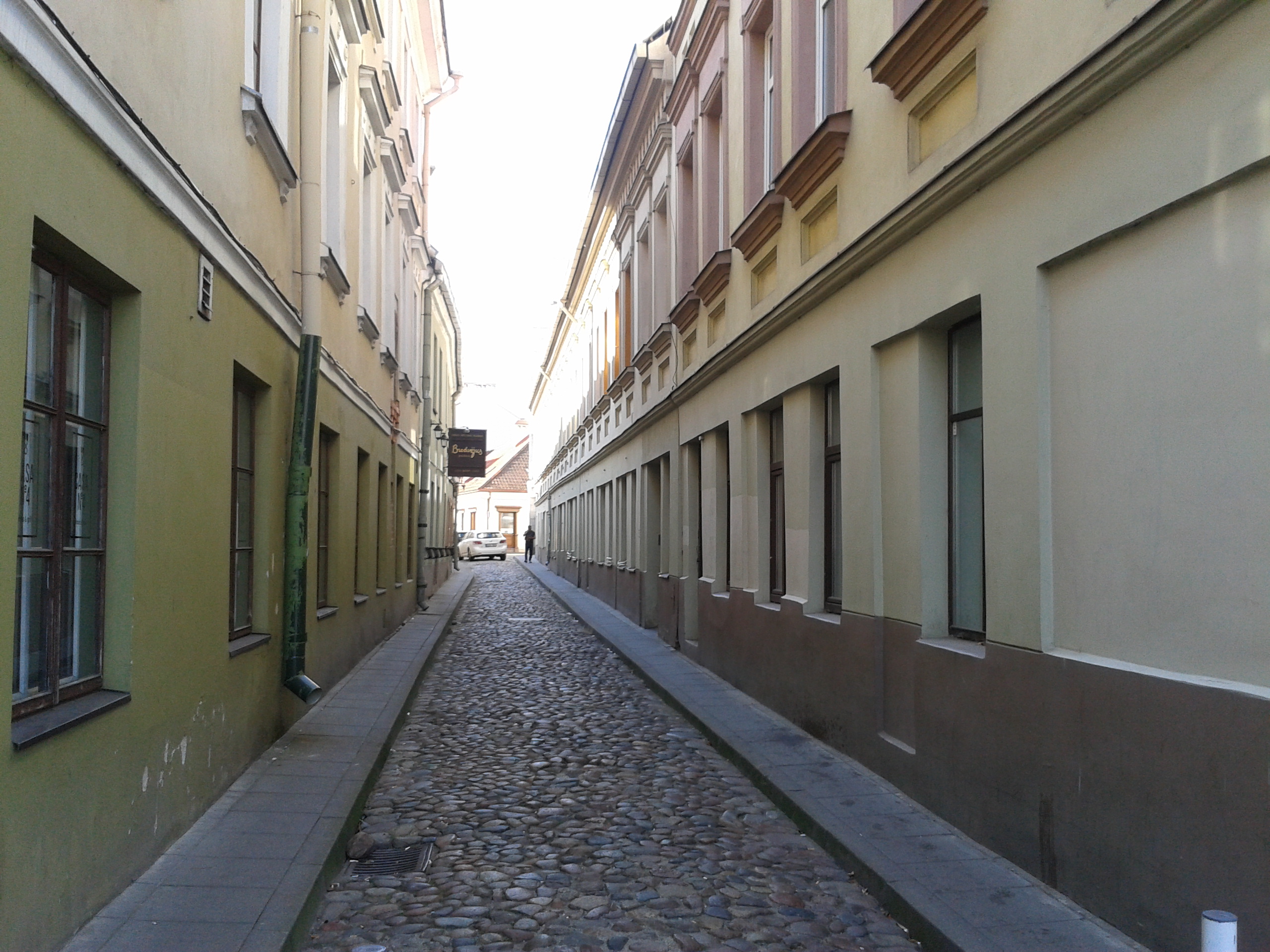 Mėsinių Street in Vilnius Old Town. That was one of the longest and most important street in the Jewish Quarter
Mėsinių Street in Vilnius Old Town. That was one of the longest and most important street in the Jewish Quarter






















